There’s a very large pink elephant in our Earthly room. We skirt about it in our busy ‘technologically advanced’, apple-big-mac’ed lives. We’ve become so busy chomping on our fake burgers and wearing our jolly-poly-synthetic three month wares, taking selfies and pinging off two thousand rounds of texts or ammo a day, that we seldom, if ever, stop to consider some of the primary human questions: Who are we? And where did we come from?
Perhaps there’s no coincidence that many of us seldom bother these days to ask such deeply relevant questions.
It may not entirely be our fault that we lack that level of substance. At some point in our human history we’ve been taught, trained, dulled-down, indoctrinated, and/or caught up so fully in the throws of paying that hefty mortgage (because one DOES have to have a better house than Jo Smith up the road), that we don’t really think for ourselves all that much; nor as deeply as we sometimes could, should, or as our ancient ancestors seemed to have.
Despite all the rampant ‘life-of-ease’ materialism that surrounds us, it’s probable we’re still fundamentally just surviving, just getting through life the way we’ve been taught. But don’t take my word for it: ask your Soul.
Now, this is not to bash our current human epoch (much), okay. I know it’s likely been that way on Earth for eons – regardless of society, war, style, fabric or food. Right? So why bother thinking too much about something perhaps a little scary, threatening, or seemingly inconsequential or unanswerable? Why consider, when, as the catchy phrases these days go, “life is how it is.” “It’s just the way we are” – us good ol’ humans. We’ve come to love these throwaway lines as much as lives are thrown away every day on our planet. ‘We are who we are’, and we came from…well, who cares. Let’s not overthink it. Besides, look at where humans are now with our Iphones, Macs and fancy pants electric cars. Aren’t WE the evolved ones?

Sacsayhuaman, Peru
Actually, not really. Not with the mounting evidence littered across planet Earth in the form of mysteriously advanced ancient structures, artifacts and sites that not only indicate a high level of intelligence, but also technology.
Excuse me, did I say ‘littered’? That’s NOT entirely accurate, because there are signs an advanced ancient ‘builder race’ that pre-dated us was actually very strategic in the location of many of its stone structures.
But let’s first start with the basics – a brief archeological tour 101 of Giza’s Great Pyramid and Sphinx, just to give an example. This equivalent of a ripper megalithic post-it-note slapped on the side of our planet carries the scrawled essence of the words: “Remember who you are. Remember where you came from”. One could also be forgiven for throwing in “remember your greatness”. After all, the Great Pyramid itself is an incomparable mathematical, architectural and masonry feat…hiding in plain sight before us all.
‘Hiding in plain sight?’
Yep, just ask the bulk of the classical archeology fraternity, many of whom seem to be wearing slightly darkened academic shades that assume and conclude things from inside of – what might be fair to say is – a reasonably old paradigm and perspective…one that may or may not be true. Many of these folk continue to insist that the approximate 2.5 million blocks that make up the Great Pyramid were piled high as if in a random act of sheer GENIUS, (on just about every known level), by a gazillion slaves with ropes and pulleys, at the bidding of a Pharaoh (Khufu) who must have had a whopping ego. Throw in a few chisels to create superbly crafted edges and ‘bob’s your uncle’. Presto! Easy explanation.
Yet, there the Great Pyramid stands, with its thirteen acre flat base – to within a fraction of a centimeter – all perfectly aligned with the cardinal points (North, South, East, West) in a way that virtually no other building has bested to this day.
Let’s not also miss the fact that the ratio of the Great Pyramid base’s circumference to its original height (ie. before the capstone disappeared) is apparently equal to the value of Pi: 3.14.
Ahem…Pi wasn’t known for another millennia after its supposed build date. Think about that.
And consider this: constructing this man-made monstrosity at, say, 10 blocks a day weighing 2-6 ton a piece (with some of the blocks 70 ton granite. Don’t worry, just a few IN THE MIDDLE) it would have taken an estimated 664 years to construct. That’s quite a long-term vision and accuracy of mathematics and architecture over time. Well done, Egyptians.
It’s a shame they couldn’t seem to remotely emulate the same feat of engineering before or after in other pyramid constructions. Is it possibly because the Great Pyramid and Sphinx were stand alone…even from some other time period? Or perhaps a highly advanced intermediary civilisation appeared around that time, then disappeared just as quick. Who knows. But anyone who’s stood up close and personal gets that they’re something else.
As for the Sphinx, one of the largest single stone statues in the world that sits near the pyramids, the builders chunked off blocks of limestone in pre-construction – some weighing up to 200 ton (with chisels or saws, apparently…as you do when you chomp through massive blocks of stone). Then they popped them up on top of each other to create the Sphinx Temple, seemingly in a lightweight kitset fashion as they’re sandwiched so tight.
Easy, you say. Not. Just consider that several decades ago engineers were tasked to move a 200-ton boiler with…TWO cranes, which took over six weeks.
That’s perspective.
And then there’s the water erosion on the Sphinx – consistent with hundreds or thousands of years of rain-water beating down on it, according to well-known geologist Robert Schoch. It hasn’t rained like that since Giza was savannah land…many millenia ago…placing the Sphinx, apparently, nearer to pre-10,000BC. I’ll leave other researcher’s theories regarding astronomical alignments of the Pyramids to Orion’s Belt of stars out for now, along with the subsequent theory of their much older creation date…I don’t want to get overly complicated, or into too much hot water.
Basically, that’s a super quick wrap on the 101-archeology tour of the Giza magnificence, missing out umpteen mysterious facts, figures and amazing points, but you get the gist I hope.
So, what else? What other examples around the world show signs of an advanced ancient builder race?
Plenty.
Here’s a list of just four other examples of advanced ancient masonry, design and engineering, from around the world that seem chronologically or technologically out of stride with our current education or understanding about our ancient past:
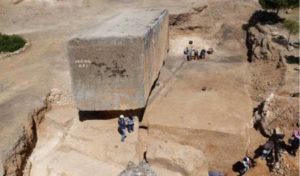
Baalbek, Lebanon
Baalbek, Lebanon: The Temple of Jupiter is built on a platform of stones that are among the largest building blocks in the world. Whilst the newer construction atop is Roman, 27 of these enormous limestone blocks that are visible at the base appear completely different in style and age. Three of these huge base blocks, known as the ‘Trilithon’, weigh at least 1,000 tons each. They were believed to be sourced in a nearby quarry where two other huge monolith’s remain – one being the largest known carved stone block in the world weighing approximately 2,400 ton. How on earth did they cut 1,000 ton blocks, let alone move them perfectly into place next to one another? And at what point in our human history?
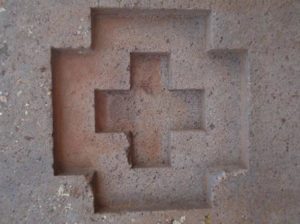
Puma Punku, Bolivia
Puma Punku & Tiwanaku, Bolivia: Supposedly created by the Inca people, but by many accounts (including those of the Inca), they simply inherited this remarkable site and incorporated it. Puma Punku is filled with precision and complex structures and stone masonry. Smoothly formed drill holes and channels in some of Earth’s hardest stone defy the technology of the Inca’s, and in some cases even modern man, according to some engineers. Some consider the stone work to have required a laser type of technology at minimum. Historically, back in the 1950s, an eminent archeologist named Arthur Posnansky estimated (after 50 years of research at Puma Punku and nearby Tiwanaku) the date of the two sites being around 15,000BC, based on astronomical alignments of the main temple.
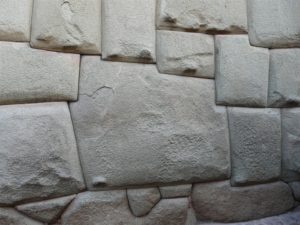
Cuzco, Peru
Cuzco, Peru: A megalithic city whose foundations are made up of polygonal and precision stonework. In fact, Machu Picchu not withstanding, Peru is a real boon location for ancient megalithic wonders all round. The Great Plaza of Sacsayhuaman and its three massive terrace walls are spectacular. The megalithic andesite stones, some of which weigh up to 200 ton, display precision fitting and are so closely spaced that in many cases a single piece of paper will not fit between the stones. As with Cuzco and Ollantaytambo, the stones almost appear as if they’ve been poured into molds, much like concrete.
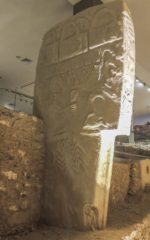
Gobekli Tepe, Turkey
Gobekli Tepe, South East Turkey: Perhaps currently one of the greatest lynchpins for alternative theories about our human history, and the mother of all spanners in mainstream archeology, is Gobekli Tepe. At over 6,000 years older than Stonehenge, this megalithic site flourished an incredible 12,000 to 14,000 years ago. Today, its preserved remains still show high levels of sophistication and megalithic engineering skill that potentially tip our human history on its head and beg new questions. The quality of stone work and artistic style at Gobekli Tepe simply should not exist. The site has been carbon-dated by German archeologists to the end of the last ice age.
Examples such as these might leave the more soulful of us curious, and for those who ponder the age-old questions about humanity – ‘who are we’, and ‘where did we come from’ – leave us wondering anew about the mysteries of our ancient origins.
In my optimism, I like to think so.
***
Louise Beker is a Life Coach and Author of several novels, ‘The Bright New Dawn‘ and ‘Her Eight Limbs of Love‘
louisebeker.com

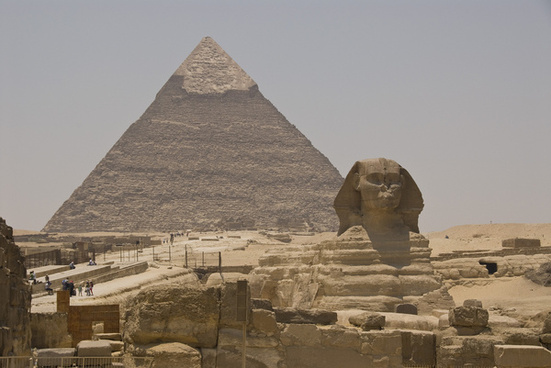
Your style is very unique in comparison to other folks I have read stuff from. Thanks for posting when you have the opportunity, Guess I will just book mark this page. Michelina Donal Broida
As soon as I found this website I went on reddit to share some of the love with them. Electra Herbie Alejo
I like the valuable info you provide in your articles. Glennie Lyon Cralg
Great post! We will be linking to this great article on our site. Keep up the great writing. Renate Jocko Germaun
This information is magnificent. Thumbs up! You are obviously very knowledgeable. I enjoyed reading this. Debbie Roland Nerti
I am so grateful for your article post. Thanks Again. Much obliged. Illa Angel Herb
Great, thanks for sharing this blog post. Really looking forward to read more. Want more. Valeda Tally Emanuel